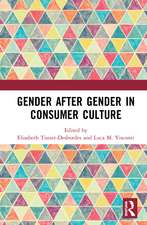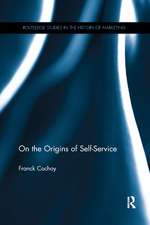The Evolution of Luxury
Autor Ian Malcolm Taplinen Limba Engleză Paperback – 25 sep 2019
Whereas pre-industrial hierarchies cloaked inequality in various secular and sacred guises to mitigate its presence, capitalism justified and reified inequality as a measure of individual success and initiative through interdependent market behavior. The result of this transformation is that status markers have become aspirational tools as hierarchies became porous and self-identity less ascriptive.
Correspondingly, as demand for luxury became legitimized, the supply side underwent dramatic changes. Such changes are explored fully in the sectors of fashion, art and wine. As demand for high priced and scarce goods in each of these sectors has increased, in each case key actors have manipulated markets to purposefully either consolidate their pre-eminence or manufacture the requisite scarcity that affords them canonical status.
The demand for and supply of luxury goods is now global; consumers seeking validation and affirmation of their status whilst producers engineer scarcity. Luxury is seen not only as good; it is virtuous, its demand possibly insatiable and extremely profitable.
| Toate formatele și edițiile | Preț | Express |
|---|---|---|
| Paperback (1) | 362.82 lei 6-8 săpt. | |
| Taylor & Francis – 25 sep 2019 | 362.82 lei 6-8 săpt. | |
| Hardback (1) | 1000.27 lei 6-8 săpt. | |
| Taylor & Francis – 27 sep 2019 | 1000.27 lei 6-8 săpt. |
Preț: 362.82 lei
Nou
Puncte Express: 544
Preț estimativ în valută:
69.43€ • 72.40$ • 57.71£
69.43€ • 72.40$ • 57.71£
Carte tipărită la comandă
Livrare economică 20 martie-03 aprilie
Preluare comenzi: 021 569.72.76
Specificații
ISBN-13: 9780367351229
ISBN-10: 0367351226
Pagini: 182
Ilustrații: 2 Tables, black and white
Dimensiuni: 152 x 229 x 11 mm
Greutate: 0.29 kg
Ediția:1
Editura: Taylor & Francis
Colecția Routledge
Locul publicării:Oxford, United Kingdom
ISBN-10: 0367351226
Pagini: 182
Ilustrații: 2 Tables, black and white
Dimensiuni: 152 x 229 x 11 mm
Greutate: 0.29 kg
Ediția:1
Editura: Taylor & Francis
Colecția Routledge
Locul publicării:Oxford, United Kingdom
Public țintă
General, Postgraduate, Professional, and UndergraduateCuprins
List of Tables
Acknowledgements
Index
Acknowledgements
1. Introduction
Luxury fashion
Market for art
Fine wine
Individuals, organizations and globalization
2. Luxury in historical context
Luxury as vice
Christianity and luxury
Money, markets and morality
The advent of capitalism
3. Industrialism, materialism and the birth of a consumer society
Culture of consumption
Industrialism
Home as domestic refuge and emblem of success
The dawn of mass consumption
Conclusion: Reconciling old and new
4. Mass production, mass consumption and new consumers of luxury
Mass production and mass consumption come of age
More money for workers to buy things
Selling the acquisitive lifestyle
Rethinking status
Inequality and materialism
What are people buying?
5. At Home in the Fields of Luxury: From artisan production to global brands
Luxury branding
Luxury goods firms
The business of fashion
Consolidation and growth
6. Art: From aesthetics to investment grade collateralArt’s changing role
Market intermediaries: Auction houses and dealers
Modern art and the new marketplace
Revitalized auction houses and dealers become galleries
Is art a good investment?
Conclusion
7. Fine wine: Creating luxury in a bottle
Evaluating wine
Wine’s early history
Quality control
California’s early wine history
Napa’s rebirth
Cult Napa: luxury wines from the new world
Conclusion
8. Conclusion: Pilgrims on the luxury roadBibliography
Index
Notă biografică
Ian Malcolm Taplin is Professor of Sociology and International Studies at Wake Forest University and Visiting Professor at Kedge Business School, Bordeaux. He is the author of numerous articles and books on the organization of work in the clothing industry and the evolving structure of markets in the wine industry in Napa California, North Carolina and Bordeaux. He is the North American Editor of the Journal of Fashion Marketing and Management.
Descriere
This book offers a unique analysis of how our definitions of luxury have changed over the ages, and with that the role and actions of both suppliers and buyers of luxury products. It traces the way luxury was seen as avarice in past societies to being viewed in more virtuous terms.
























